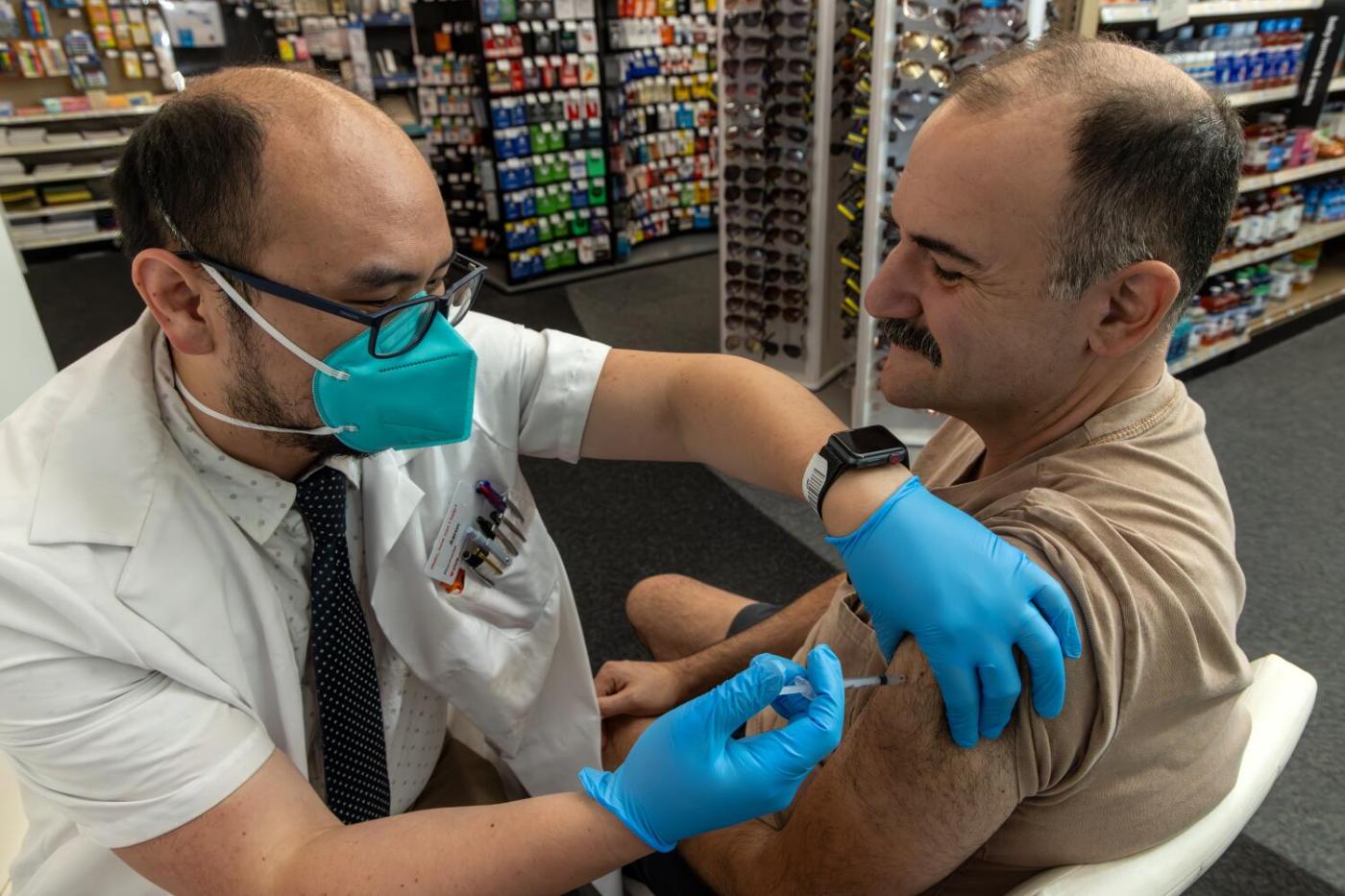
Hospitalizations and ‘long COVID’ remain concerns; new vaccines promise help
More than four years after the spread of a novel coronavirus became a global pandemic, the Centers for Disease Control and Prevention consider COVID-19 to be an endemic disease — one that is always present in the population.
But even as the virus is beginning to fall into a twice-a-year infection pattern, it has not been around long enough for that pattern to become predictable, said Keeley Morris, Ph.D., senior epidemiologist at the Minnesota Department of Health.
“Defining when a disease becomes endemic is sort of tricky, and that is because the transition to endemicity takes time,” Morris said. “In as much as COVID-19 is a disease that is circulating regularly, that we are learning how to live with, it definitely is considered endemic, but that doesn’t mean that COVID doesn’t still surprise us.”
As COVID continues to become endemic, how is COVID being managed in Minnesota, how have people’s protections against the virus changed and what is happening with long COVID, a chronic condition that develops after an acute infection?
COVID infections and hospitalizations
The U.S. is currently experiencing a summer wave of COVID infections. In Rochester, the amount of virus being detected in the city’s wastewater has come down from a late-July peak, but still remains elevated compared to springtime’s low levels.
This spike in cases is not surprising, Morris said, as people’s prior immunity to the disease — acquired through vaccines or from catching COVID this past winter — begins to wane during the summertime.
“That, combined with the continued evolution of the virus that causes COVID-19, tends to lead to a little bit of an uptick in cases around this time of year,” Morris said.
A factor that has changed over time is hospitalization due to severe COVID infections. On Aug. 1, the statewide seven-day average for COVID hospitalizations was 33.71 patients, up from averages of around 10 patients in the spring, but lower than the highest rate seen this past winter, on Dec. 29, 2023: 87.71.
While Minnesota’s hospitalizations due to COVID have bumped up this summer, the overall hospitalization rates for COVID in 2023 and 2024 remain substantially lower than the November 2020 peak for hospitalizations in the state. At that time, an average of 271.86 patients were hospitalized with COVID.
“Early on, when very few people had been exposed to COVID-19, we saw high hospitalization rates across, really, all age groups,” Morris said. “That is because COVID was a new pathogen; people didn’t have existing immunity.”
Now that people’s immune systems have built up a history with the virus — through vaccination, prior infections or both — Morris said COVID hospitalizations have declined among certain populations.
“Unfortunately, that benefit (of immune history) hasn’t always translated to the higher risk population, which includes people over age 65 or people who have immune-compromising conditions,” Morris said. “At this point, the vast majority of our hospitalizations and deaths are occurring in those groups.”
Additionally, children ages 4 and younger are more likely to be hospitalized due to COVID.
“That is likely due to a whole constellation of reasons, but one of them is that group hasn’t had many years of exposure to the virus, so they don’t benefit from the immune history that people in other age groups do,” Morris said.
Understanding long COVID
As COVID infections persist, so does long COVID.
“People who have symptoms that can be present across the body … that persist for more than three months beyond the acute COVID infection may be suggestive of long COVID,” said Dr. Stephanie Grach, a senior associate consultant in general internal medicine at Mayo Clinic.
The symptoms of long COVID can vary in type and severity. Grach said she defines long COVID cases as being in one of two buckets. The first bucket is when COVID triggers conditions such as asthma, autoimmune conditions, heart problems — things that the “medical field is already familiar with,” Grach said.
“Things that could be sent to a specialist and taken care of much like any other person, irrespective of having COVID or not,” Grach said.
In the second bucket are long COVID cases with complex conditions that involve multiple body systems, such as postural orthostatic tachycardia syndrome (POTS), fibromyalgia and mast cell activation syndrome.
“These are conditions that, for the most part in the medical field, we haven’t really been trained to recognize or treat, nor … is there much in the way of an appropriate structure to address these more complex conditions,” Grach said.
How providers like Grach treat long COVID cases depends on what the patient’s symptoms are.
“If it’s someone who falls into that first bucket, where it’s COVID triggering psoriatic arthritis or rheumatoid arthritis, then I’m going to feel comfortable sending them to a rheumatologist, in that case, to get their management,” Grach said.
For patients who fall in the second category, Grach said she focuses on therapies that are used in managing those multi-system conditions. One therapy is pacing: managing your activity level so that you avoid triggering fatigue or other symptoms from over-exertion.
“Long COVID patients actually do a lot better long-term if we implement pacing instead of telling them to push their symptoms,” Grach said.
Lots of research — from studying long COVID patients’ genetics to looking at muscle biopsies to understand the effects of post-exertional malaise — is underway at Mayo Clinic and at other institutions around the world, Grach said.
“We’ve never seen, at least all at one time, quite the depth of research by so many people in places all at once in the area of infection-associated chronic conditions,” Grach said.
But research toward evidence-based therapies and practices takes a lot of time. For patients with long COVID now, Grach said many providers are using off-label therapies to address their symptoms.
“The call to wait the usual 10 to 15 years before there’s enough progress in medicine, in a way, isn’t right, especially when there are generally safe things that we could be doing sooner to try and help people,” Grach said.
Living with COVID
A disease being endemic means adjusting and learning to live with it.
“It is certainly one of the most substantial causes of infectious disease in Minnesota, and it still leads to what we would consider to be an unacceptable number of hospitalizations and deaths,” Morris said. “Thankfully, it does seem like our transition to endemicity is reducing the impact of COVID-19.”
Morris said the same measures to prevent infection still apply: washing your hands, staying home when you’re sick, covering coughs and sneezes and, for those at higher risk of severe disease, wearing masks in crowded or poorly ventilated areas.
And vaccination remains an important measure, Morris said. Last week, the CDC approved the updated mRNA COVID vaccines for people ages 6 months and older. The updated immunizations, Morris said, are more likely to be effective against the strains of virus circulating now.
Related Articles
New COVID-19 XEC variant circulating just before fall
Lisa Jarvis: The best treatment for COVID is still too hard to get
A new genetic analysis of animals in the Wuhan market in 2019 may help find COVID-19’s origin
A mysterious syndrome that paralyzed kids seems to have disappeared. But why?
When should I get flu and COVID shots? Experts disagree — but say get them however you can
“These vaccines target one of the COVID-19 variants known as KP.2,” Morris said. “That variant is one of the dominant various circulating in Minnesota and nationally right now.”
Morris said another updated COVID-19 vaccine, a protein-based version produced by Novavax, will likely get CDC authorization this year, too.
For people who got sick during this summer’s COVID wave, Morris said the recommendation is to wait at least three months after that infection before they get their next shot.
“After you have recovered from a COVID-19 infection, you have a triggered immune response similar to the way that a vaccination triggers an immune response,” Morris said. “So it’s better to wait a little bit later so that you can maximize the benefit of those vaccinations.”
As for long COVID, Grach said the best way to prevent long COVID is to avoid getting COVID.
But for those who fall ill, Grach said there is ongoing research on medications that could reduce one’s risk of developing long COVID after an infection.
“I think that this will be a really key area for us once we, especially, better understand all the mechanisms behind why people … progress to long COVID,” Grach said.
Additionally, Mayo Clinic research published last year found that long COVID patients who were vaccinated before the infection that triggered their lingering symptoms had less severe symptoms compared to unvaccinated long COVID patients.
Dené K. Dryden is a multimedia journalist who currently focuses on local health care reporting in Rochester, Minn., home of the Mayo Clinic.

